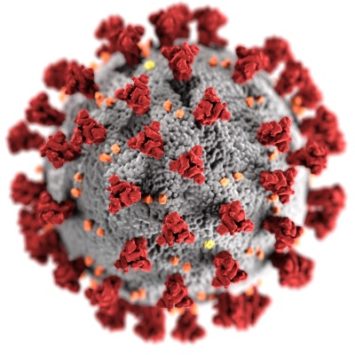COVID-19 Isn’t Caused by Bacteria
by Saranac Hale SpencerQuick Take
False information that claims COVID-19 is caused by a bacteria and can be easily treated started spreading by text message, and is now viral on social media. Actually, COVID-19 is caused by a virus and there is no treatment for it.
Full Story
COVID-19 is caused by a virus that was first seen in China at the end of 2019 and has spread around the world, reaching pandemic proportions. There is currently no specific treatment for it or a vaccine to prevent it.
But a viral online claim misinforms social media users, telling them among other things: “Covid19 is a bacterium, easily treated with aspirin and coagulant.”
The claim started spreading as a text message — a Portuguese version circulating on WhatsApp was debunked by the Brazilian fact-checking organization Agência Lupa on May 15 and another version was debunked by India Today on May 25. But it has now migrated to social media platforms, including Facebook, where it’s spreading in popular American conspiracy theory groups.
The post circulating in U.S. groups claims that Italian authorities “allegedly discovered covid is not a virus, but a bacterium” and that they discovered this when “[t]hey went against the World Health Organization’s \’law\’ that no bodies be autopsied.”
None of that is true.
The Italian Ministry of Health describes the novel coronavirus, called SARS-CoV-2, and the illness it causes, known as COVID-19, the same way as the U.S. Centers for Disease Control and Prevention and the World Health Organization. They all explain that the novel coronavirus is a newly recognized strain in the family of viruses known as coronaviruses, which includes the viruses that cause the common cold as well as more severe diseases, such as the Middle East Respiratory Syndrome, or MERS, and the Severe Acute Respiratory Syndrome, or SARS.
The Italian ministry continues to refer to COVID-19 as a virus, not a bacteria.
Here, it’s important to understand the difference between bacteria and viruses. Bacteria are single-cell organisms that can live in various environments, including the human intestines, where they help to digest food, the Mayo Clinic explains. While some types of bacteria are harmless, or even helpful, to humans, others can cause diseases, such as strep throat. Bacterial infections can usually be treated with antibiotics.
Viruses, however, are smaller than bacteria and need a living host in order to multiply. They operate by taking over and hiding inside host cells. They cannot be treated with antibiotics.

The virus now known as SARS-CoV-2 was isolated on Jan. 7 in China and information about it was shared internationally for research purposes.
Illustrations of the virus have been ubiquitous over the last few months, too. They show the spiky crowns that are typical of the coronavirus family, which gets its name from the Latin word for crown.
So, the claim that Italian authorities discovered that “Covid19 is a bacterium, easily treated with aspirin and coagulant” is false. Not only does it misuse the name of the disease, it falsely suggests that SARS-CoV-2, the virus that causes COVID-19, is a bacteria. Also, there is no treatment that has been approved by the U.S. Food and Drug Administration or recognized by the WHO.
The other part of the claim is also false. The WHO didn’t institute a “\’law\’ that no bodies be autopsied.”
But the Italian Ministry of Health, which is lauded in this claim for conducting autopsies, had actually sought to limit them for COVID-19 deaths, issuing guidance on April 1 that said autopsies should not be performed on those who died with “full-blown” cases of COVID-19.
The WHO published guidance in March detailing precautions to be taken while performing autopsies on those who died from COVID-19.
Generally, it said, dead bodies are not infectious, but warned that some organs of a person who died during the infectious period of COVID-19 could still contain the live virus. It recommended that autopsies be performed in adequately ventilated rooms with as few people present as possible, and that they all wear appropriate personal protective equipment.
Editor’s note: FactCheck.org is one of several organizations working with Facebook to debunk misinformation shared on social media. Our previous stories can be found here.
Sources
FactCheck.org. “Q&A on the Coronavirus Pandemic.” 18 Mar 2020.
Ministry of Health, Italy. Novel Coronavirus – About the virus and the disease. Accessed 27 May 2020.
Steckelberg, James. Mayo Clinic. “Bacterial vs. viral infections: How do they differ?” Sep 7 2017.
World Health Organization. “Infection Prevention and Control for the safe management
of a dead body in the context of COVID-19.” 24 Mar 2020.